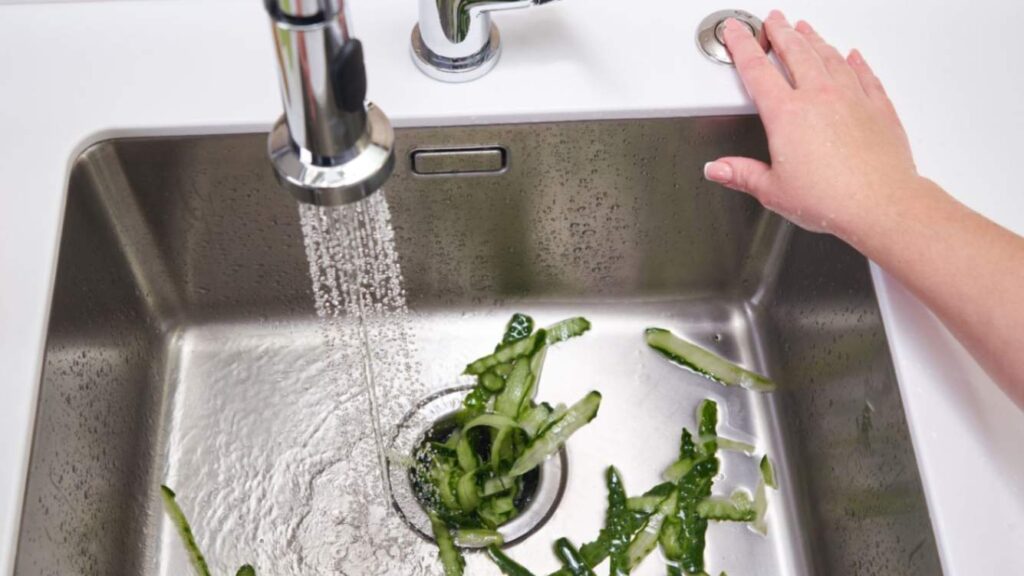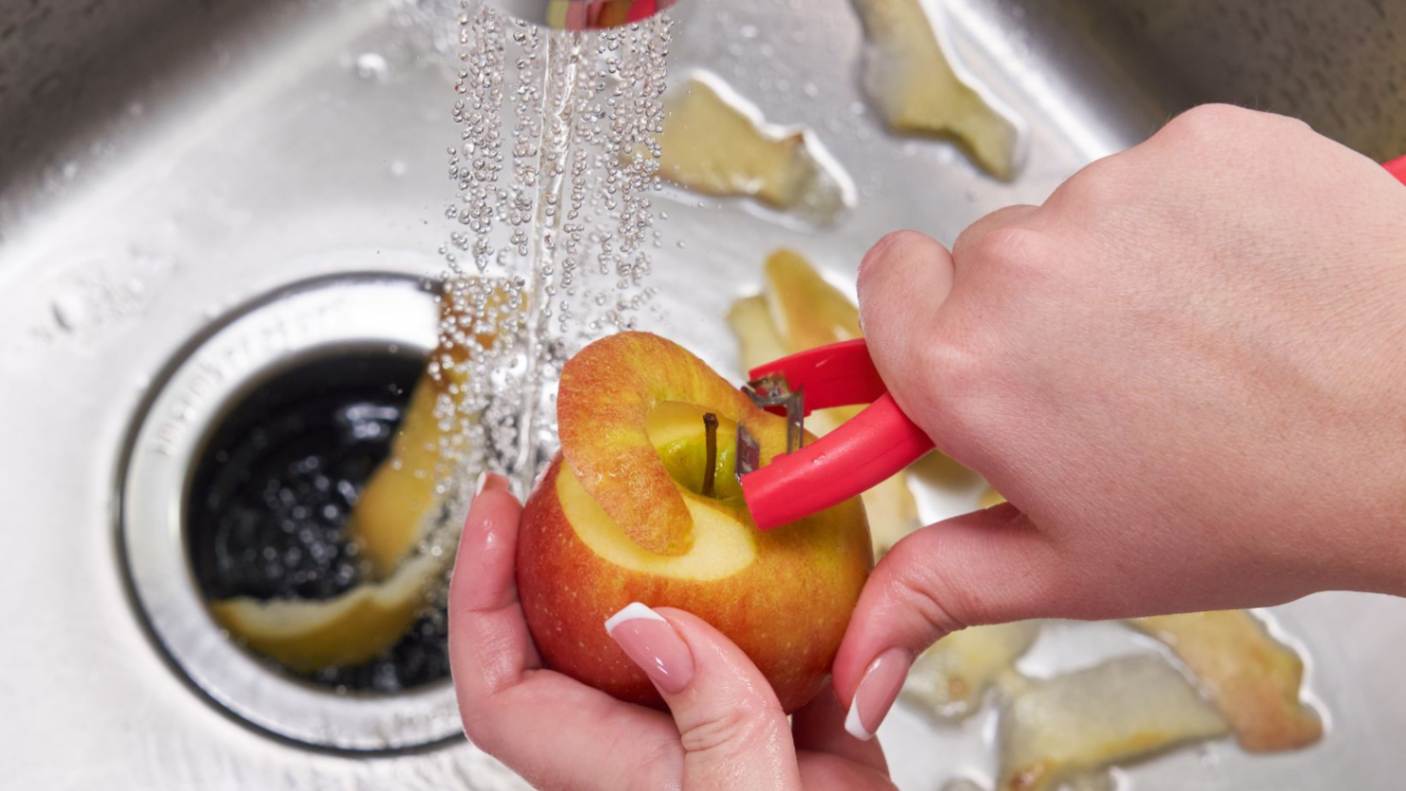Food Waste Disposer: Kitchen Must-Have
It’s an era where sustainable living is not just a choice but a necessity. Managing household waste well is now crucial. One innovative solution is gaining traction in eco-friendly homes. It is the food waste disposer. This handy kitchen appliance is not only a step towards modern convenience but also a stride in eco-friendly living. It offers a simple yet effective way to manage food scraps. It turns a daily chore into a chance to help the environment. This article delves into waste disposers. It explores their function and benefits. It also looks at how they help reduce waste and boost sustainability. Are you renovating your kitchen or upgrading your waste system? Maybe you’re just curious about sustainable living. If so, learning about the role of a waste disposer can be eye-opening. So, let’s explore how this appliance can become an essential part of your eco-friendly kitchen arsenal.

What is a Food Waste Disposer?
It’s an appliance that offers a swift and hygienic way to dispose of food scraps right in your kitchen sink. But how exactly does it work?
Understanding the Mechanism
The disposer is installed under the kitchen sink and connected to the drain. When food scraps are fed into it, a grinding mechanism – typically a plate with small, sharp blades – pulverizes the waste into fine particles. Water flushes these particles through the plumbing system. They eventually reach a wastewater treatment facility or a septic system.
Installation Process
Installing this appliance is a straightforward process that can usually be handled by a professional plumber. It involves mounting the unit under the sink, connecting it to the power supply, and ensuring it is properly linked to the drainage system. Most modern kitchens can accommodate a disposer with minimal modifications.
A waste disposer in the kitchen makes waste management simpler. It aligns with eco-friendly living by efficiently handling everyday food scraps.
Environmental Benefits
Adding a disposer to your kitchen is more than just convenient. It’s an environmentally responsible choice.
Reducing Landfill Waste
One of the most significant advantages of using a food waste disposal method is the reduction of food scraps that end up in landfills. When organic matter decomposes in landfills, it releases methane, a potent greenhouse gas. By grinding and flushing food waste, disposers help in minimizing this environmental concern.
Contribution to Waste-to-Energy Conversion
In many areas, wastewater treatment facilities can convert organic waste into renewable energy. Fine ground food waste from disposers can be part of this process. It helps make biogas, which can be burned for heat or to make electricity.
Soil Enrichment Opportunities
Some wastewater facilities can transform organic waste into biosolids used for agricultural and landscaping purposes. These biosolids are nutrient-rich fertilizers. They promote healthier soil and cut the need for chemical fertilizers.
In essence, a food waste disposer offers an eco-friendly solution to food waste. It helps reduce greenhouse gas emissions. It also aids in making renewable energy and promoting sustainable agriculture.
Practical Benefits in the Home
Having a food waste disposer in your kitchen isn’t just about the environment. It also has several practical benefits for your daily life.
Convenience and Efficiency
Instead of collecting food scraps in a bin and worrying about odor or pests, you can simply dispose of them immediately down the sink. This efficient process not only saves time but also keeps your kitchen cleaner and more hygienic.
Enhanced Kitchen Hygiene
By disposing of food waste instantly, you significantly reduce the risk of attracting insects and rodents, which are drawn to food scraps. This ensures a cleaner kitchen. It is better for your family’s health.
Addressing Misconceptions
There are common concerns about disposers, such as increased water usage and potential plumbing problems. However, modern disposers use less water. They are safe for most plumbing when used correctly.
Space-Saving Solution
Unlike compost bins or garbage cans, a waste disposer is under the sink. It saves kitchen space and reduces clutter.
Incorporating a food waste disposer into your kitchen setup not only aligns with eco-friendly living but also enhances your daily kitchen experience with its convenience, hygiene, and space-saving qualities.

Choosing the Right Food Waste Disposer
Selecting the appropriate disposer for your home involves considering several factors to ensure it meets your specific needs.
Assessing Size and Power
- Size of the Unit: Consider the size of the disposer and the available space under your sink. Make sure the model you choose fits comfortably in the designated area.
- Motor Power: Disposers come with various motor sizes. For larger households or frequent cooking, a more powerful motor might be necessary to handle the increased volume of food waste.
Features to Consider
- Noise Levels: Some models are designed to operate more quietly than others. If noise is a concern, look for disposers with sound-sealing technology.
- Grinding Capabilities: Evaluate the types of food waste the disposer can handle. Some models are more equipped to grind tougher food scraps than others.
Ease of Installation and Compatibility
- Installation Process: While some disposers are relatively easy to install, others might require professional installation. Consider this factor when making your choice.
- Compatibility with Septic Systems: If you have a septic system, ensure the disposer is compatible and won’t cause any issues.
Taking the time to choose the right food waste disposer based on your household’s size, cooking habits, and specific requirements will ensure you get the most out of this eco-friendly kitchen appliance.
Maintenance and Care
Proper maintenance and care are crucial to ensure your disposer operates efficiently and lasts longer. Here are some best practices to keep in mind.
Regular Cleaning
- Routine Rinsing: After each use, run cold water through the disposer for a few seconds to flush out any remaining food particles.
- Deep Cleaning: Occasionally, clean the disposer with a mixture of baking soda and vinegar or a disposer cleaner to eliminate odors and buildup.
Proper Usage
- What to Dispose of: Avoid putting hard, fibrous materials like bones or corn husks into the disposer, as they can damage the blades or cause clogs.
- Avoiding Grease and Oil: Grease and oil can solidify within the plumbing, leading to blockages. It’s best to dispose of these substances in the trash.
Preventing and Addressing Clogs
- Preventive Measures: Regularly use a combination of ice cubes and coarse salt to sharpen the blades and clear accumulated grease.
- Dealing with Clogs: If a clog occurs, turn off the disposer and try clearing it with a plunger or plumber’s snake. Avoid using harsh chemicals that can damage the disposer and pipes.
By following these simple maintenance and care tips, your food waste disposer will remain a reliable and efficient part of your eco-friendly kitchen for years to come.
To Sum it Up
Incorporating a waste disposer into your kitchen is a step towards a more sustainable and eco-friendly lifestyle. It’s convenient and hygienic. It helps with everyday food scraps. It also reduces kitchen waste and its environmental impact. From minimizing landfill contributions to potentially aiding in renewable energy production, a disposer is an appliance that aligns with the growing need for responsible waste management.
As we continue to seek ways to ‘go green’ in our daily lives, considering the installation of a food waste disposer is a practical and effective choice. It’s about making small changes that add up to a big difference in our environmental footprint. So, whether you are renovating your kitchen or simply looking to make more eco-conscious choices, remember that a food waste disposer can be a key component in your journey towards a greener, more sustainable home.

